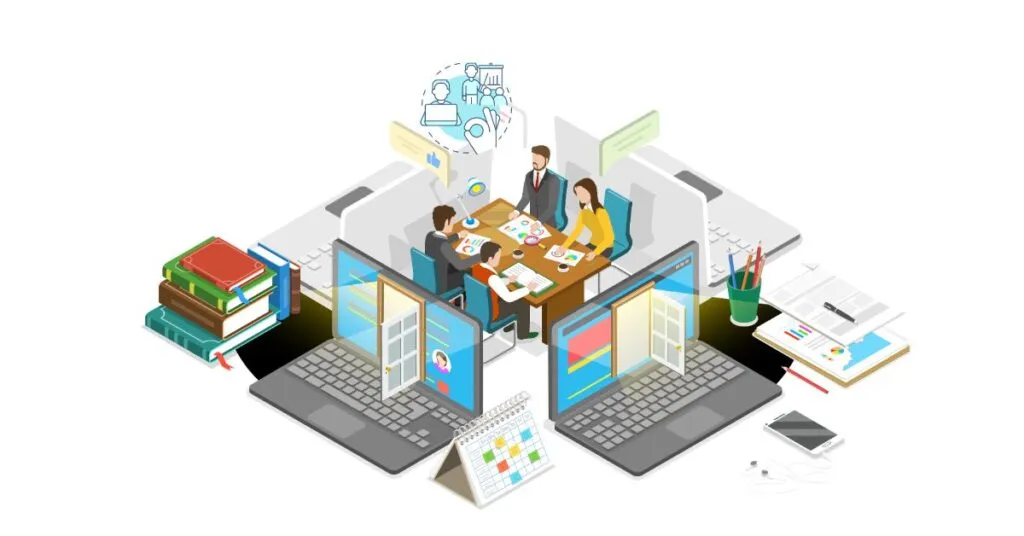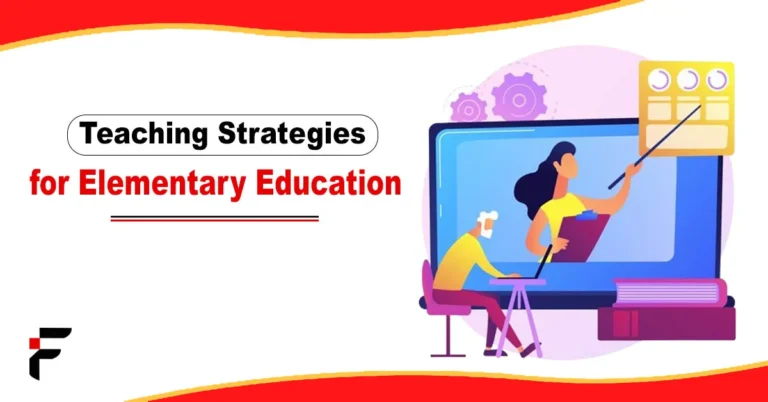In the profession of teaching, teachers are adopting different and new strategies from time to time. These strategies benefit the classrooms for effective learning. One day, my friend and I were discussing elementary teaching strategies, and they enthusiastically said, my teaching strategies are something else 🌟.
As teaching strategies in elementary play an essential role in building students’ minds 🧠 which will bring progress to their education. And that’s why I’ve decided to conclude some of their strategies for enthusiast teachers so that they can learn more and teach more passionately.
So, Let’s Start!
12 Best Teaching Strategies for Elementary Students
Here, I’ve compiled some of their suggestions as effective teaching strategies that may help you understand little minds.
1. Cooperative Learning
An instructional strategy in which students learn in the form of groups. The task can be as complicated as writing a story or an essay, or solving a quiz. In cooperative learning, teachers motivate the students to listen to each other’s ideas as a group.
Teachers encourage the students to support each other in a group and help each other to reach the end goal.
2. Behavior Management
Behavior Management promotes an atmosphere in which teachers focus on mutual respect and minimize trouble-making behavior. Teachers ensure that they provide the students with an equal opportunity to attain their potential in the classroom.
It is very important to give them a positive and productive learning environment. This strategy for effective teaching provides a productive environment.
3. Student-Led Teaching
In this strategy, students act as teachers. In elementary education, you can enhance the ability of students to learn by letting them become teachers. It is the most effective method to increase the engagement of students in learning by teaching them how to give feedback to their fellows.
Student-led like effective teaching strategies, enable the students to work in the form of groups and teams. Students can learn independently by adopting this strategy.
4. Teacher as a Model
“Teachers as models” means that teachers can set their example in a sustainable style. When you tell students what to do and how to do it, it becomes easier for them to learn. Visual learners can benefit from this strategy of learning.
Teachers tell their students the key answers to complex questions to make it easier for them. The teacher clearly shows the students how to work on an activity or project before students begin.
5. Hybrid Learning Techniques
A combination of online learning with traditional learning is called hybrid learning. Hybrid learning is also known as blended learning. In this strategy, teachers combine online educational data with physical place-based classrooms. Students can watch already recorded videos or lectures before taking the class.
Teachers focus on interactive activities such as problem-solving activities and discussions. At the elementary educational level, this technique allows students to work at their desks and become physically and mentally more active. Whiteboard tablets are examples of Hybrid learning.

6. Formative Assessment Process
It is an elementary education strategy in which teachers make instructional adjustments to support students’ learning. It is a learning-centered approach. This strategy is used to periodically judge students’ learning progress.
This method precisely calculates the learning process, which can help improve teaching methods. Self-evaluation exercises are the best examples of the formative assessment process.
7. Gamification
Gamification is one of the smart teach teaching strategies for elementary students. It can enhance the student’s learning capacity. Educational games lead to teaching a student more excitingly. This strategy is very helpful for kinesthetic learners.
Adopting these strategies will keep a student motivated and focused on their learning. An active mind is the key to success. Gamification is the most effective method for the mental growth of students. Gamification reduces stress levels, which are interconnected with new learning.
8. Visualization
Visualization techniques promote the imaginary picture in the minds of students as they read a story or a lesson. These pictures help the students understand the deepest meanings of the lesson, which helps students to keep the longest-term memory.
The visualization technique motivates the students to organize the information in their memory to better hold the upcoming concepts. This technique encourages students to make connections between the students and the real world.
9. Summative Assessment Method
In summative assessment strategies, teachers design papers and tests for students to understand the progress of their learning. This strategy helps teachers determine class learning and motivates students to pay attention to their lessons.
Midterm exams, classroom tests, essay writing, etc, include a summative assessment method. Summative assessment helps understand the wide and absolute level of the learning environment.
10. Differentiation
The teacher’s strategy in which teachers allocating assignments based on a student’s academic abilities and learning progress. Teachers split the overall class into small groups based on their abilities. Interleaving and phased learning are differentiative techniques for the elementary level of education.
Differentiation is a very impactful teaching strategy for the active learning of students. Each group will be assigned an assignment that is according to the group’s ability, while other groups may read and discuss their text independently.
11. Experiential Learning
In this strategy, teachers use the real world to engage the students in their classroom. Through cooperative learning, students can engage themselves with real-world scenarios, working with each other. This technique has a powerful impact on developing positive relationships with each other in a classroom.
Experiential learning also plays an important role in increasing communication skills in a broad range. Group work promotes learning and builds interaction between students. Teachers focus on students’ well-structured tasks. Experiential learning techniques enhance the flexibility and active outcomes of learning.
12. Feedback
It is a well-evidenced teaching strategy in which teachers give feedback on the learning progress of students. Teachers help the students by giving them information on how they can improve their performance in their examinations.
Feedback should be given at the right time and be actionable. A detailed base feedback that describes how students can make progress in upcoming tests or papers.
Teaching Strategies Examples Might Help You Understand
Here is what I was answered when I asked for some teaching strategies examples to my friend.
1. Differentiated Instruction
Customize the lessons to meet the different needs, learning styles, and abilities of elementary students.
Why Do This: Teachers can offer different levels of difficulty for tasks that provide them with alternative ways of showing their understanding (e.g., oral presentations, drawings, or written responses).
Example: During a math lesson, students could be given different worksheets based on their current understanding of the concept.
2. Hands-On Learning
When students actively participate in learning activities that involve physical manipulation or experimentation is called Hands-on Learning 🧠.
Why Do This: Students learn by doing, such as using blocks for math and conducting simple science experiments.
Example: In science, students could grow plants in small pots, tracking their growth to learn about plant biology.
3. Interactive Read-Aloud
Reading a book aloud to the class while engaging them through discussion and questioning is the best example of teaching strategies.
Why Do This: The teacher pauses during the reading to ask questions or explore the themes of the story with the students to engage them.
Example: In a read-aloud of Charlotte’s Web, the teacher might stop at key moments to ask, “What do you think Wilbur will do next?” or “Why do you think Charlotte helps Wilbur?”
Bottom Line
There are different kinds of teaching strategies for elementary education. You have to adopt some of these strategies in your classroom for better teaching purposes. These strategies are very helpful for engaging pupils in their learning more effectively. With these strategies at the elementary level, the environment of the class will surely become enriching for teachers and pupils.
These strategies motivate students for active participation and learning experiences. Strategies like blended learning, experiential learning, gamification, formative and assessment methods, etc, make education enjoyable and effective for students.


